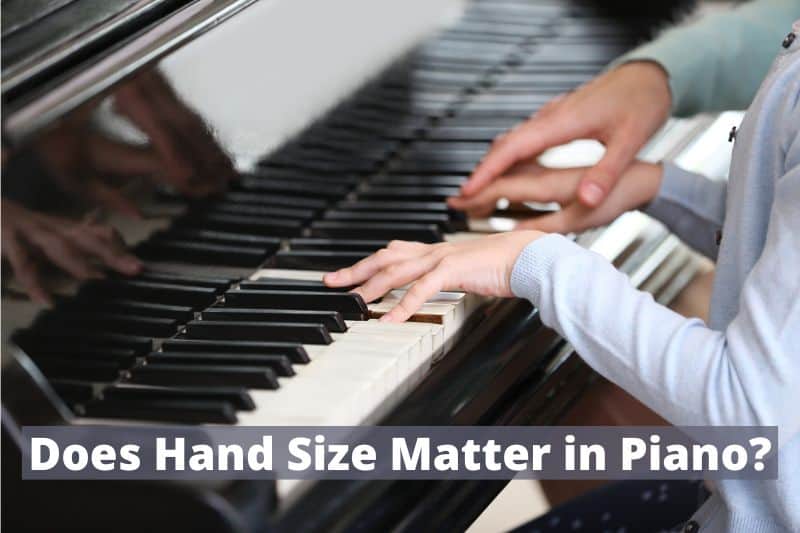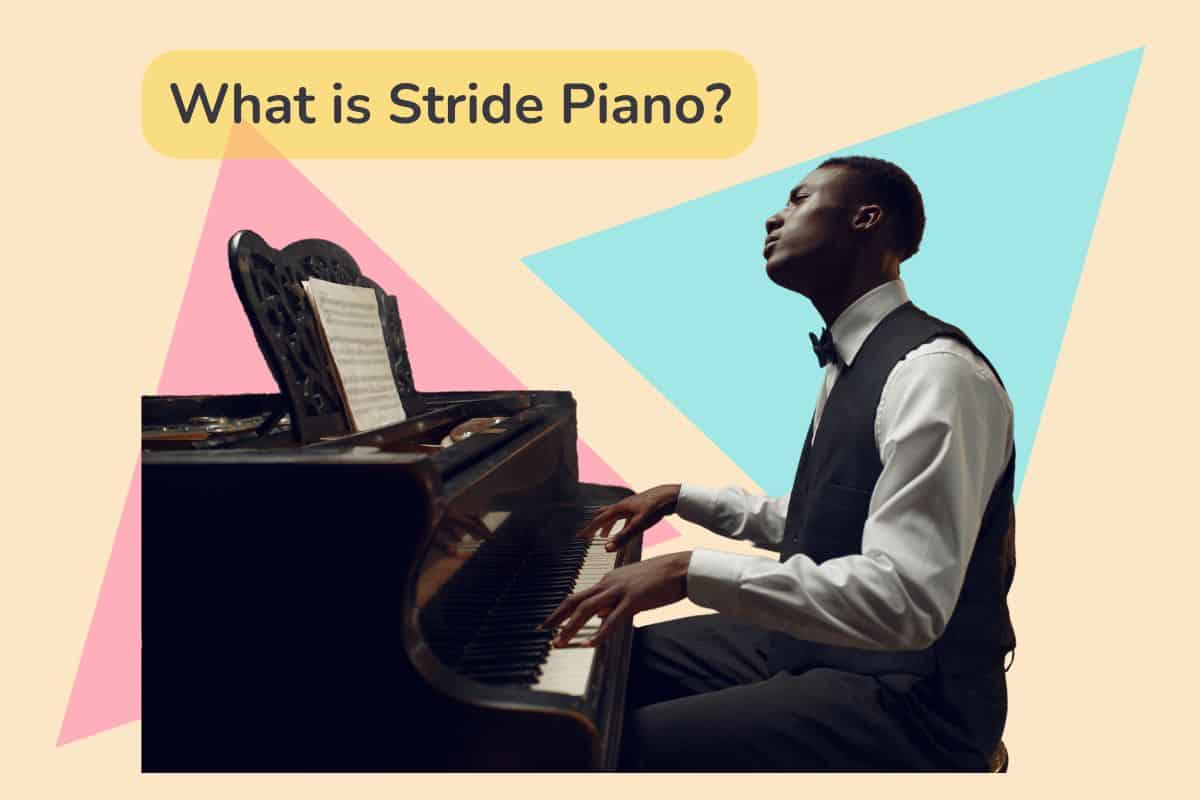If you’re just starting out as a pianist, you might be struggling to reach certain keys even as you start to improve. Or perhaps your child is getting frustrated sitting in front of an instrument so much larger than them. This can naturally lead you to ask whether hand size matters while playing the piano.
Hand size does not matter in piano, as anyone with any hand size can play, but those with larger hands will find it easier to learn. A hand size of over 8.5 inches (22 cm) will allow pianists to play a tenth interval. You can play the piano no matter how big or small your hands are.

In this article, I will discuss how hand size affects piano players. What the ideal hand size for people who play the piano is, and how people with smaller hands can adjust their playing. Keep reading to learn more about hand size and piano playing.
How Does Hand Size Affect Piano Playing?
Making music with a piano involves creating chords. Chords are several complimentary notes played simultaneously, creating a beautiful sound. They can also be played in succession, where they make a melody or accompaniment.
Different chords are made by including notes at different intervals.
For example, a C major triad is C-E-G. The E is four semitones above C, and the G is seven semitones above C. The C minor triad, on the other hand, is C-Eb-G. The Eb is only three semitones over C.
Chords on the piano are made by pressing down several keys simultaneously, and the more keys that are pressed down, the richer the chord is. You can create especially rich chords with the piano, potentially using ten notes at the same time.
Each note on the piano is a separate key, with each key sounding only one note, which is different from instruments like the guitar, where a chord is created by sounding different notes on the same six strings. Because of this, the piano is more dependent on hand size than other instruments that use chord voicings.
Are Bigger Hands Better for Piano?
Generally speaking, bigger hands are better for playing the piano, as there is a broader reach for the fingers. When fingers can reach more notes, they can access more complex chords. Having bigger hands will cause less strain on your fingers, especially when you’re just getting accustomed to the keyboard.
However, although having larger hands may offer you an advantage in terms of a wider hand span, there aren’t really any other advantages this has over average-sized hands.
Playing the piano requires a lot of precise fingering and accuracy, not just range of motion. The only guaranteed way to become a master pianist is to practice.
Are Long Fingers Good for Piano?
You may have heard that people with long, slender fingers are better suited to the piano than others. While long fingers might help with reaching keys that are more than an octave apart, they won’t make playing much easier.
Long fingers might help you reach slightly more keys, but just like having larger hands, they aren’t a replacement for diligent practice. Even if you can naturally reach a wide range of notes with your hands, work on getting longer intervals.
What Is the Ideal Hand Size for Piano?
If your hands can reach more than 8.5 inches (22 cm), you’ll be able to play a tenth interval, which are third intervals but played an octave above a traditional third. This is generally accepted as the range necessary to be able to play most chords and to make transitions between different octaves smoother.
Having a comfortable reach also allows you to play with less effort and strain on your fingers. If stretching your pinky to get that 10th note is hard for you, it might make playing painful and discourage you from learning.
Can You Play Piano if You Have Small Hands?
Don’t worry if you find that your hands don’t quite reach 8.5 inches (22 cm). Big hands aren’t necessary for playing the piano. Stretch out your range by practicing scales and interval training. All you really need to be able to play is a comfortable octave.
If there are just a few notes in some pieces of music that you can’t reach, don’t let that prevent you from playing the piece entirely. Modify the chords to not include the notes you can’t reach, and if your range improves, you might be able to add the notes later.
Young children still learning shouldn’t be discouraged by the difficulties they face reaching different keys. If they train while their hands grow, they’ll be able to reach an octave and above no matter how small their hands are.
Small hands are not an excuse for not learning the piano, as you’ll see in the next section.
Famous Pianists With Small Hands
Although large hands will help you play the piano, there have been many great pianists in history that were famous for overcoming challenges presented by their small hands.
Here are some of the most famous world-class piano players that had small hands:
Alicia de Larrocha
Alicia de Larrocha was one of the most prominent Spanish composers and pianists of the 20th century. She performed her first concert at the 1929 World’s Fair at age 6, when her hands were presumably even smaller. She was said to have a “wide stretch between thumb and index finger,” but in all likelihood, she developed that stretch through years of practice.
This video of de Larrocha shows just how capable she was, even with her relatively smaller hands:
Vladimir Ashkenazy
Ashkenazy was a conductor and a world-class pianist who graduated from the prestigious Moscow Conservatory. He is regarded as one of the most famous small-handed pianists in the world.
This video showcases how small Ashkenazy’s hands are but also how technically impressive he was:
Josef Hoffman
Josef Hoffman was a Polish pianist at the turn of the 19th century. He was considered a child prodigy and began touring around Europe at only nine years old. Steinway even commissioned Hofmann a piano with narrower keys to accommodate his hands.
This video of Hoffman was filmed in 1945, but it shows that he was impressive even by today’s standards:
Wael Farouk
Contemporary pianist Wael Farouk was born with shortened finger ligaments; even as an adult, he had child-sized hands. Farouk is unable to make a fist but was the first to ever perform Rachmaninoff’s Piano Concerto No. 3 in his home country of Egypt. He is hailed as a “super-virtuoso” and has been given several honorifics and awards.
This recent video of Farouk performing with the New Philharmonic proves that hand size is not the most important thing when it comes to mastering any instrument:
Final Thoughts
A reach of 8.5 inches (22 cm) is generally wide enough so you won’t strain your fingers as you play, but if you can’t quite reach that far, work with interval training, and you may find that your reach improves.
Don’t be discouraged if you find that your hand size is smaller than average. If you are a young pianist, your hands will grow, and you’ll be able to develop your skills even more. But there are plenty of world-class pianists that are living proof that small hands will not stop you from becoming a great pianist.



